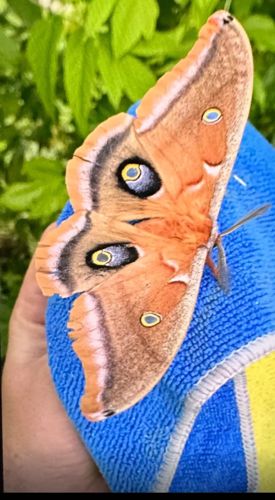Polyphemus Moth
Scientific Name: Antheraea polyphemus
Order & Family: Lepidoptera, Saturniidae
Size: Wingspan typically 10-15 cm (4-6 inches)

Natural Habitat
Woodlands, forests, suburban areas, and orchards across North America where host plants are abundant.
Diet & Feeding
Adults do not feed as they lack functional mouthparts. Larvae (caterpillars) feed on the leaves of a wide variety of deciduous trees and shrubs, including oak, maple, birch, willow, elm, and fruit trees.
Behavior Patterns
Nocturnal; adults emerge in spring/early summer; males are strong flyers and attracted to female pheromones. Adults do not feed and live only for a short period (about 1-2 weeks) to reproduce. Larvae (caterpillars) are voracious feeders on host plants.
Risks & Benefits
No risks to humans (non-stinging, non-biting). Benefits include being a pollinator (though indirect for adults, larvae contribute to nutrient cycling) and a food source for birds, bats, and other animals. As defoliators, large caterpillar populations can sometimes cause damage to trees, especially in cultivated settings like orchards, but they rarely threaten the overall health of mature trees.
Identified on: 8/16/2025